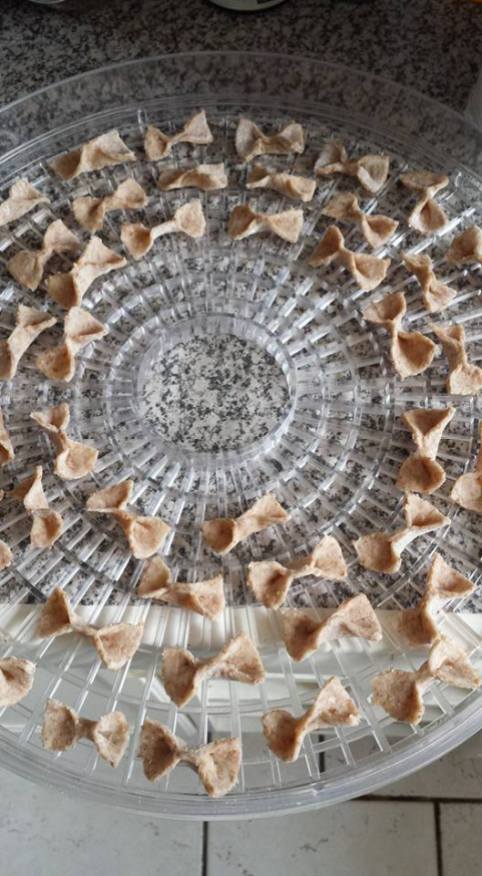Who knew that pasta was so simple to make?
I have never been a great fan of pasta, but my son absolutely loves it – he would eat pasta and pesto every single day if I’d let him. But in the UK it is difficult to find pasta without plastic packaging, particularly if you want to buy in large quantities (there are some options mainly in card but with a small plastic window). Having heard it was easy I thought I should give it a go – and it really is easy – and it got the taste approval from my fussy child. You can easily buy flour in a paper bag which you can either recycle or put in your home compost.
Ingredients:
- 3 cups wholemeal bread flour
- 1 cup hot water
Method:
Making the dough:
- If you are using a food processor fit the dough attachment.
- Add the flour, pour in the hot water and switch it on. It will turn to breadcrumbs to start with but stick with it and it will soon come together into a dough.
- Turn out onto a floured surface.
- If you are making the dough by hand place it in a large mixing bowl, make a well in the flour and pour in the hot water a little at a time and mix together either with your hands or a wooden spoon. Turn out onto a floured surface and knead until it comes together in a dough.
- Press the dough down into a flat round. Divide into 4 quarters (this will make it more manageable to roll out later).
- Cover with a clean dry tea towel and leave for 10-15 minutes.
- You could freeze all or some of the dough at this point for later use if you wish.
Now you can begin to turn it in into your desired shapes:
- Working with one piece of dough at a time roll it very thinly.
- Then you can get creative and cut and shape to your heart’s desire – but be warned, this bit can take a long time. I like to look on it as something therapeutically undemanding on the brain to do while listening to some muscic but you could get the kids to help or invite a friend round for a natter while you work. Slicing into lasagne sheets or into strips for tagliatelle is probably the quickest. I tried to make spirals on my first attempt but decided this time that bows might be easier. For bows I rolled the dough then cut into strips which I then cut across into small rectangles as shown below. To turn into bows you simply squeeze them together in the middle.
Drying your pasta:
- If you don’t want to use your pasta straight away you can dry it for storage. As I have an electric dehydrator I used that but if you don’t you can just spread them out and leave somewhere airy until dry.
- The time it takes to dry depends on the size and thickness of the shapes you have made – I dried the small bows for 3-4 hours at 50 degrees C. The first batch of spirals were larger and took 4-5 hours. The best thing is to keep an eye on them and remember to swap around the trays from time to time since the different levels may dry at different speeds.
- Once fully dry you can transfer to a storage jar until needed and cook as you would shop bought dried pasta – around 8-10 mins. If you skipped the drying part you’ll need to shorten the cooking time.
Now I know how to make basic pasta dough I’m next going to try to sneak some vegetables into the ingredients – as he’ll happily eat shop bought green pea pasta, and red lentil pasta without realising. I have seen people making pasta from pumpkin puree and flour as an example – but any recommendations on things to try are welcome – please comment below.
Find out more from Homegrown and Foraged by signing up, or following me on Facebook, Twitter or Instagram using the links at the top.





